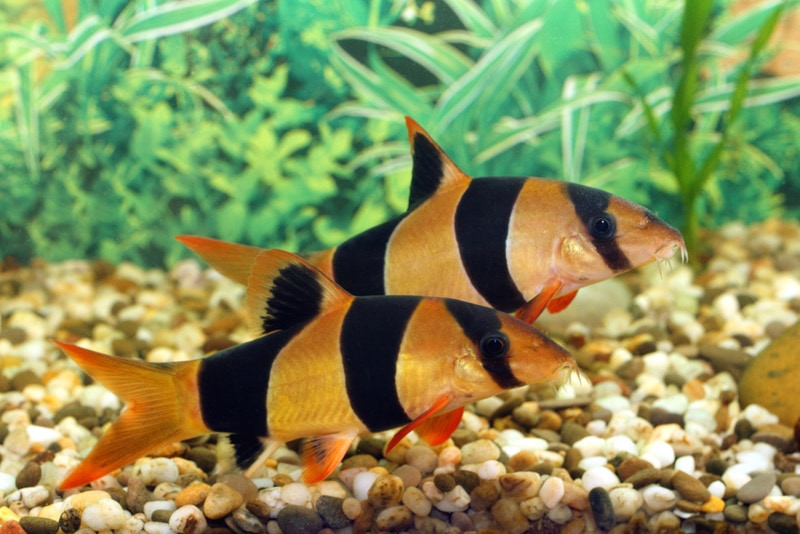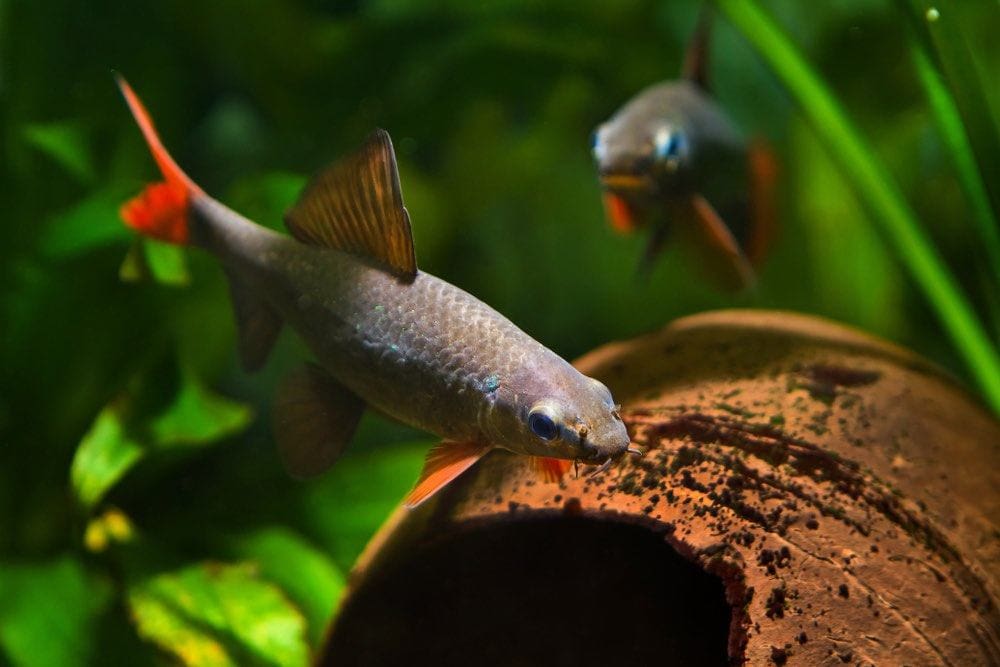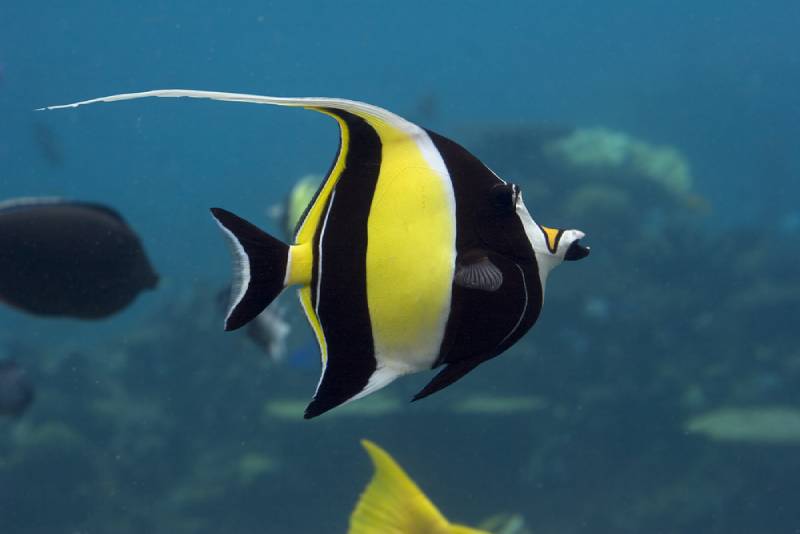12 Great Tank Mates for Pea Puffers (With Pictures)
Updated on
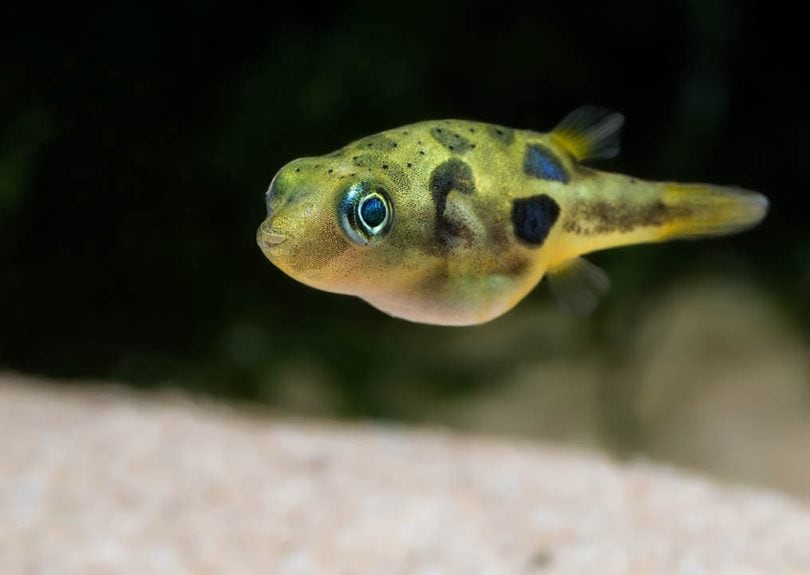
Pea Puffers are adorable little fish with big personalities. Many people feel like they are best kept in species-only tanks, but Pea Puffers can be kept in community tanks with the right environment and tank mates. It’s important to carefully choose tank mates for your Pea Puffers to ensure everyone stays safe and healthy. Here are the best options for tank mates to your Pea Puffers.
Click to skip ahead:
- Tank Mates for Pea Puffers
- Qualities of a Good Tank Mate
- Pea Puffers Living Preferences in the Aquarium?
- Aggressive Behaviors
- Benefits of Having Tank Mates for Pea Puffers
The 12 Great Tank Mates for Pea Puffers
1. Kuhli Loach
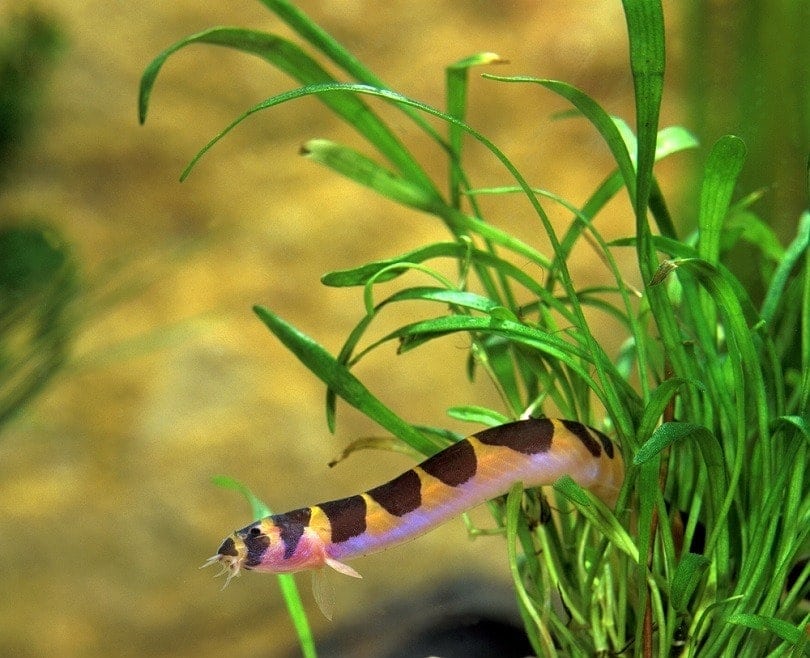
| Size: | 4–5 inches (10–13 cm) |
| Diet: | Omnivores |
| Minimum tank size: | 20 gallon (75 liters) |
| Care Level: | Medium |
| Temperament: | Peaceful |
Kuhli Loaches are bottom-dwelling fish that scavenge and function as an effective cleanup crew. They do not like to be kept alone and do best when kept in groups of at least 3–6. They are nocturnal and are very shy when kept alone, so keeping a group of them will make you more likely to see them. Their peaceful and secretive nature makes them great tank mates for Pea Puffers. They do have small defensive spikes on their bodies and while they rarely use them, it does provide them a defense against an overly aggressive Pea Puffer.
2. Chili Rasbora – Best for Small Tanks
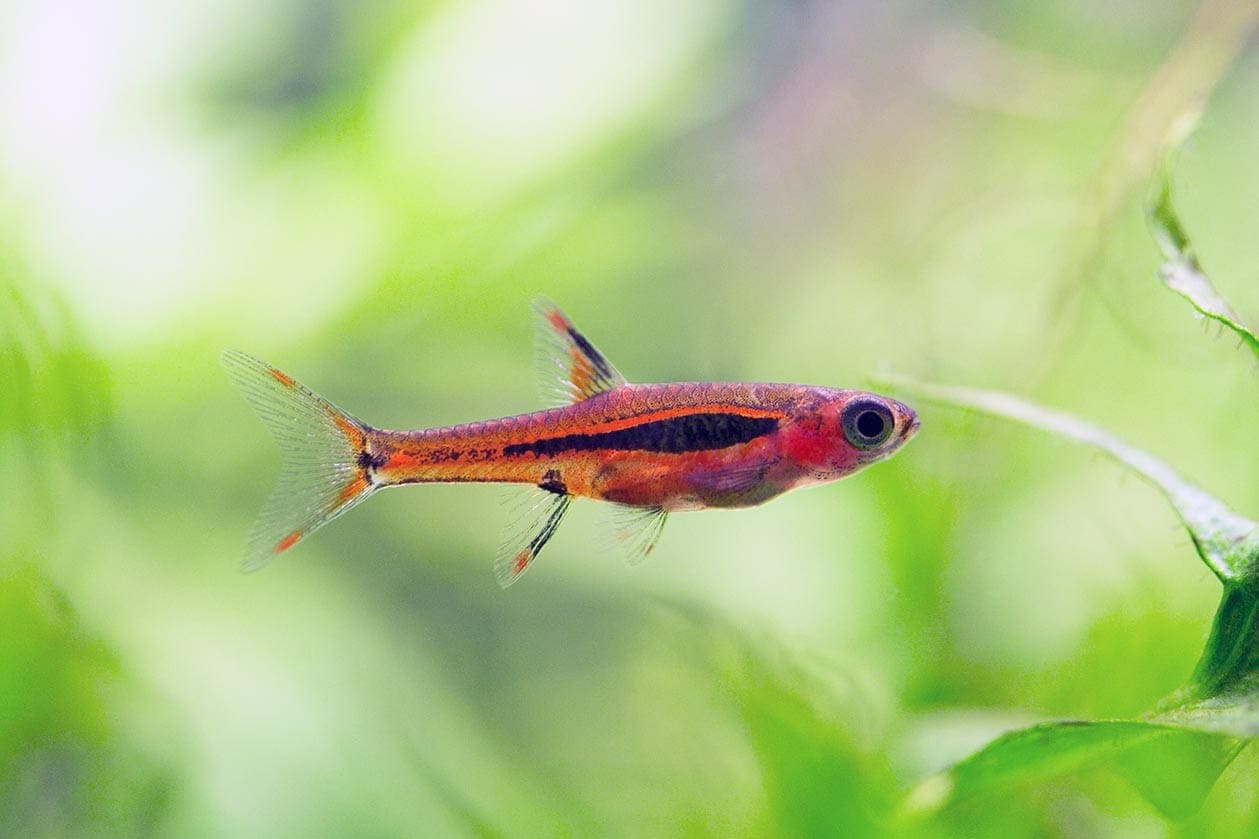
| Size: | 0.7–1 inch (1.8–2.5 cm) |
| Diet: | Carnivore |
| Minimum tank size: | 5 gallon (19 liters) |
| Care Level: | Medium |
| Temperament: | Peaceful |
Chili Rasboras are tiny, adorable fish that can be great tank mates to Pea Puffers when they are full grown. They stay extremely small and when young, they may become prey to larger Pea Puffers. These fish are shoaling fish, so plan to get 6–10 of them, at minimum. In shoals, they are active, colorful additions to any tank. If they are kept alone or in very small groups, they may be shy and uncomfortable, spending most of their time hiding.
3. Ember Tetra
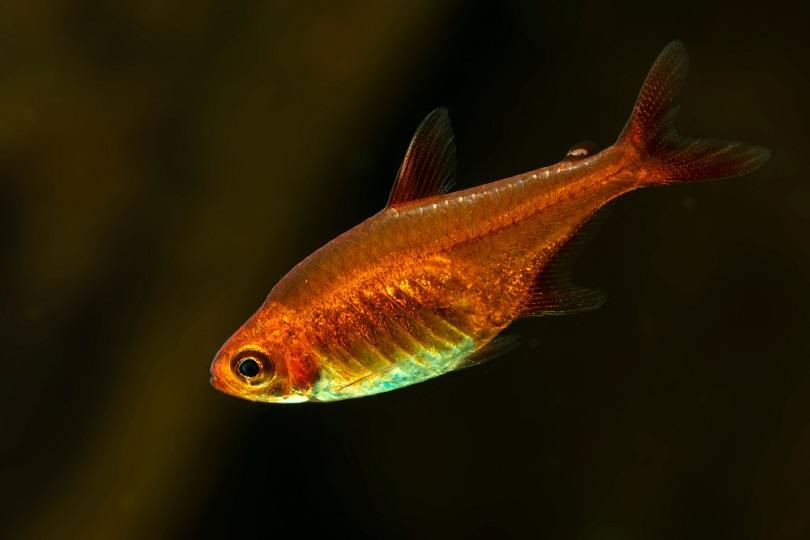
| Size: | 0.8–1 inch (2–2.5 cm) |
| Diet: | Omnivores |
| Minimum tank size: | 5 gallon (19 liters) |
| Care Level: | Easy |
| Temperament: | Peaceful, shy |
Ember Tetras are another tiny tank mate for Pea Puffers that are peaceful and make great tank mates when they are grown. Ember Tetra fry may be eaten by Pea Puffers, though. These fish are shoaling fish and should be kept in groups of 6–10 or more. Their behaviors are similar to Chili Rasboras. They are active fish when kept in large enough groups, but in poorly planted tanks or small groups, they are typically very shy and will spend their time hiding.
4. Otocinclus
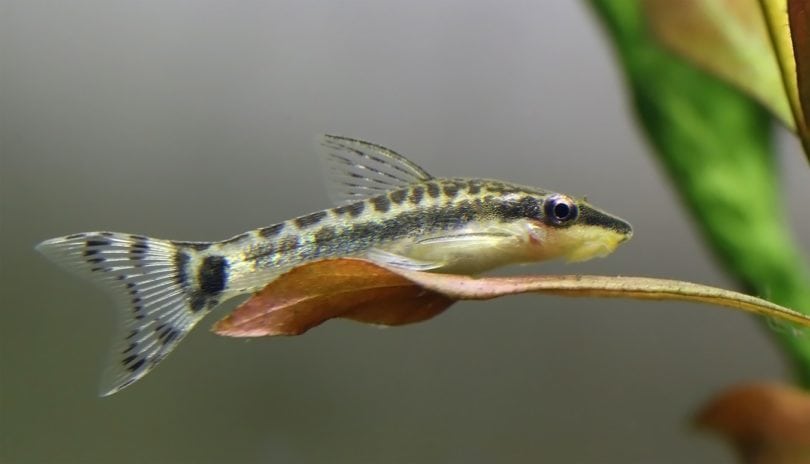
| Size: | 1–2 inches (2.5–5 cm) |
| Diet: | Herbivore |
| Minimum tank size: | 10 gallons (37 liters) |
| Care Level: | Easy |
| Temperament: | Peaceful, social |
Otocinclus catfish are tiny algae eaters who work hard to keep your tank clean. They are social fish that are best kept in groups of 6–10, but 10–20 is recommended. They are nice additions to Pea Puffer tanks because they love to eat soft, green algae, helping to keep the tank clean and algae-free. If kept alone or in small groups, they are shy and may not be seen very often. Otocinclus catfish are peaceful and are usually too large to be eaten by Pea Puffers.
5. Neon Tetra
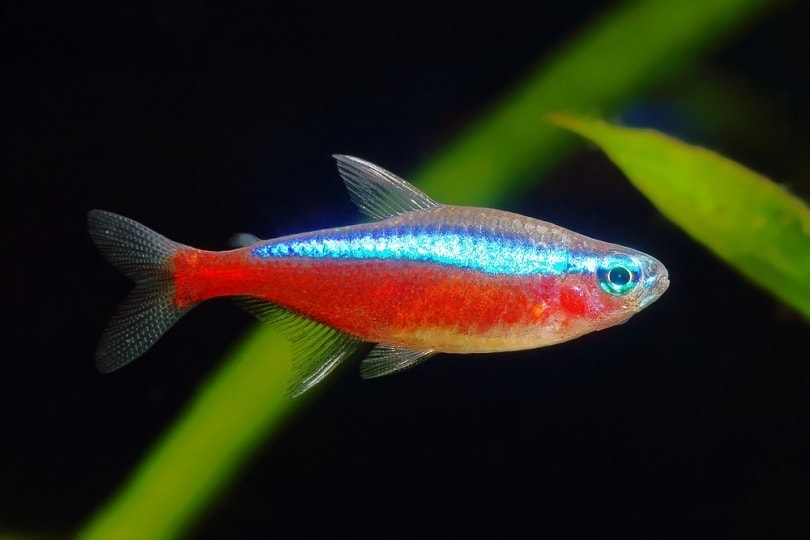
| Size: | 1–2 inches (2.5–5 cm) |
| Diet: | Omnivores |
| Minimum tank size: | 10 gallons (37 liters) |
| Care Level: | Easy |
| Temperament: | Peaceful, shy |
Neon Tetras require similar care to Ember Tetras, but they get larger. They are typically too large to be eaten by Pea Puffers and are peaceful community fish. Their omnivorous nature makes them easy to feed and they are not usually picky. If not kept in shoals and well-planted tanks, they are extremely timid and easily stressed. Keep them in shoals of at least 6–10 fish and they’ll be a brightly colored addition to your Pea Puffer tank.
6. Zebra/Leopard Danio
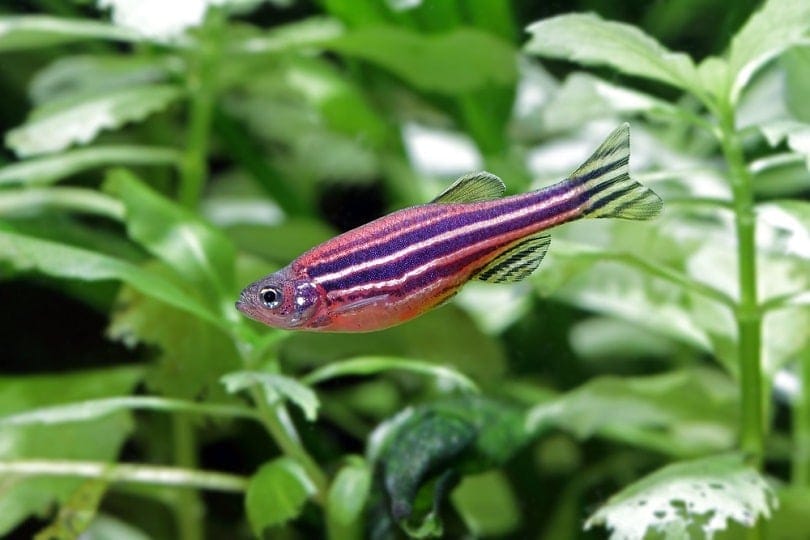
| Size: | 1.5–2.5 inches (0.6–0.63 cm) |
| Diet: | Omnivores |
| Minimum tank size: | 10 gallons (37 liters) |
| Care Level: | Easy |
| Temperament: | Peaceful, curious |
Zebra Danios are slightly smaller than Leopard Danios, with Zebra Danios usually staying under 2 inches. Both are shoaling fish that will shoal with each other if kept together. Danios are active fish that are fun to watch. They are peaceful and social fish, but they are hardy and tough enough to defend themselves if needed, making them great for Pea Puffer tanks.
7. Clown Killifish

| Size: | 1–2 inches (2.5–5 cm) |
| Diet: | Carnivore |
| Minimum tank size: | 5 gallons (19 liters) |
| Care Level: | Medium |
| Temperament: | Peaceful, predatory |
Clown Killifish are a unique addition to a Pea Puffer tank that can defend themselves if needed. They are predatory carnivores, but they tend to be peaceful, especially with fish close to their size or larger. They are best kept in pairs or harems. Male Clown Killifish may be aggressive toward other males or other fish that look similar to Clown Killifish.
8. Molly
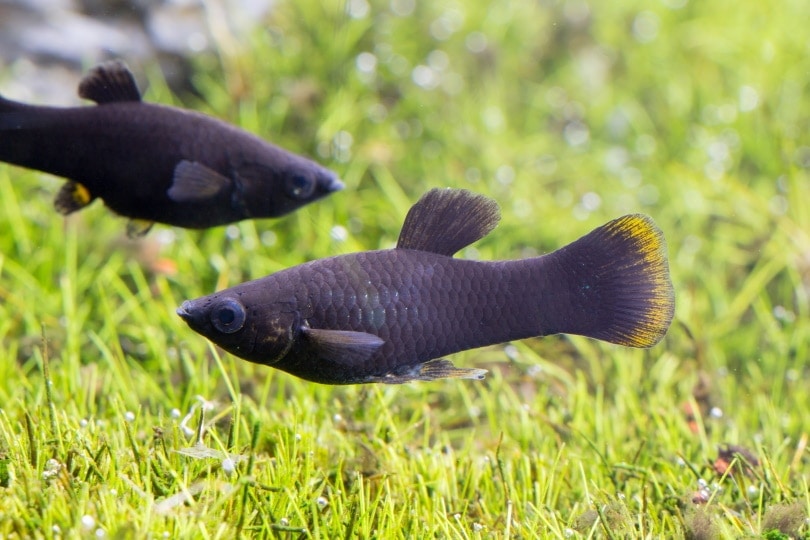
| Size: | 3–4 inches (7.6–10.2 cm) |
| Diet: | Omnivores |
| Minimum tank size: | 10 gallons (37 liters) |
| Care Level: | Easy |
| Temperament: | Peaceful |
Mollies are cute livebearers that reproduce readily and are easy to care for. They are large enough that Pea Puffers will leave them alone, although their newborn fry are at risk. They are peaceful and curious fish that tend to stay active. They are happiest when kept in groups, but they are best kept in harems. Male Mollies are aggressive when it comes to breeding and they will attack other males.
9. Cherry Barb
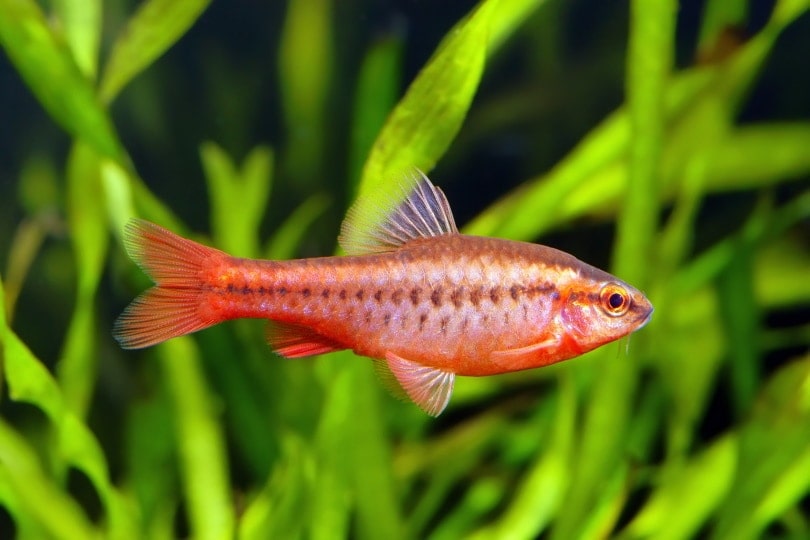
| Size: | 1–2 inches (2.5–5 cm) |
| Diet: | Omnivores |
| Minimum tank size: | 25 gallons (95 liters) |
| Care Level: | Easy |
| Temperament: | Peaceful, bold |
Cherry Barbs are pretty fish that are peaceful, but they are bold enough to defend themselves if needed. They are social and outgoing fish that bring a lot of life and energy to a tank. They should be kept in shoals of 6–10 or more, and they prefer larger tanks with many other fish of their size. With enough space and a shoal, Cherry Barbs will get along well with your Pea Puffers.
10. Platy
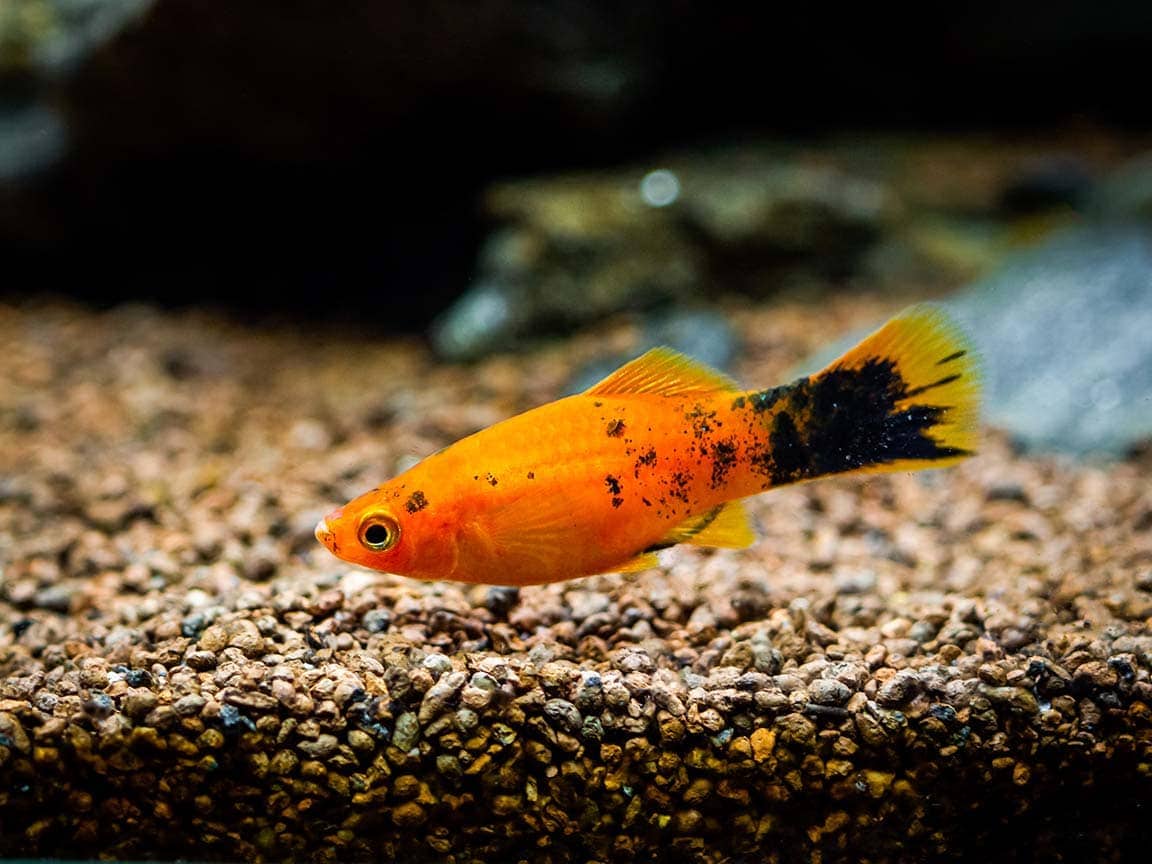
| Size: | 2 inches |
| Diet: | Omnivores |
| Minimum tank size: | 10 gallons (37 liters) |
| Care Level: | Easy |
| Temperament: | Peaceful, laid-back |
Platies are livebearers that are considered to be one of the best community tank fish for freshwater tanks. Adults are large enough to be safe from Pea Puffers, but newborn fry are at risk of being eaten. These laid-back fish are easily pushed around due to their overly peaceful nature, so it’s important to keep an eye on things to make sure they are staying safe and happy in the tank.
11. Dwarf Rainbowfish
| Size: | 2–3 inches (5–7.6 cm) |
| Diet: | Omnivores |
| Minimum tank size: | 20 gallons (75 liters) |
| Care Level: | Medium |
| Temperament: | Peaceful, predatory |
Dwarf Rainbowfish are colorful fish that make good tank mates to Pea Puffers. They are large enough to not be eaten by Pea Puffers, and they are generally peaceful fish. It is best to keep only one male Dwarf Rainbowfish because the males are prone to aggression toward each other. They do require larger tanks than most fish of their size and prefer long, narrow tanks that allow a long stretch of swimming space.
12. Corydora
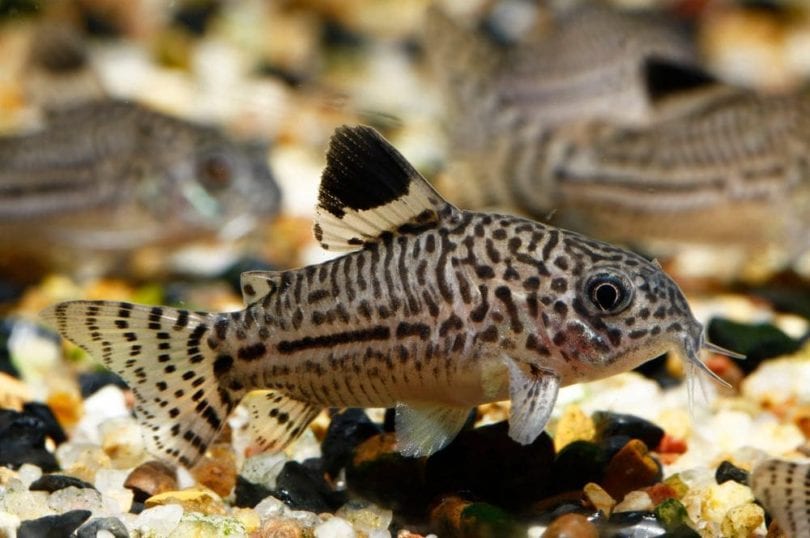
| Size: | 1–2.5 inches (2.5–6.3 cm) |
| Diet: | Omnivores |
| Minimum tank size: | 10 gallons (37 liters) |
| Care Level: | Easy |
| Temperament: | Peaceful, timid |
Corydora catfish are peaceful but timid fish that are considered to be a type of armored catfish. Their hard, plated scales help protect them, which provides them a defense against overly curious Pea Puffers. They are peaceful but they can also be quite timid, especially when wild-caught. Corydoras are typically nocturnal, so it’s not unusual for them to become more active at night.
What Makes a Good Tank Mate for Pea Puffers?
Pea Puffers are punchy fish that are happy to eat small fish and invertebrates. If kept in a tank that is too small or overstocked, Pea Puffers may become overtly aggressive toward tank mates. Choosing tank mates that will either stay out of the way of your Pea Puffers or won’t put up with bullying from Pea Puffers are your best bet. Peaceful, community fish are typically the best option for Pea Puffer tank mates because there is some power in their numbers. Fish that spend their time in the upper water column, like Tetras, and lower water column, like bottom feeders, often make good tank mates for the Pea Puffer.
Where Do Pea Puffers Prefer to Live in the Aquarium?
Pea Puffers are active fish that can be found in any part of the aquarium. However, they tend to spend most of their time in the middle of the water column. They will explore the tank looking for food or shelter, but almost always are found in this area. Their preference for the middle of the water column means that fish that prefer the upper and lower parts of the water column tend to make the best tank mates.

Water Parameters
Pea Puffers are native to the warm waters of central India, which means they need a tropical freshwater tank setup. They prefer warmer temperatures than some other tropical fish and are happiest in a tank that is kept between 78–80˚F (25.5–26.7˚C). They can live in temperatures between 74–82˚F (23.3–27.8˚C). They need soft water with a pH ranging from 6.5–7.5. Some people have successfully kept them with a pH ranging from 6.5–8.5. They do best with a stable pH, regardless of the level.
Size
These fish stay relatively small, typically only reaching 1.5 inches (0.6 cm) at the most. Their small size does not mean they can be kept in a nano tank, though. Pea Puffers require a large amount of space to feel secure and to decrease aggression. Keeping them in small or overstocked tanks will increase aggression and the risk of tank mates being attacked.
Aggressive Behaviors
Pea Puffers are moderately aggressive fish that will eat fish and invertebrates that are smaller than themselves. With enough space, they will usually leave their tank mates alone, especially if those tank mates spend their time in a different part of the water column. Pea Puffers are known to bully tank mates of any size or shape, so avoid putting them with other aggressive fish.
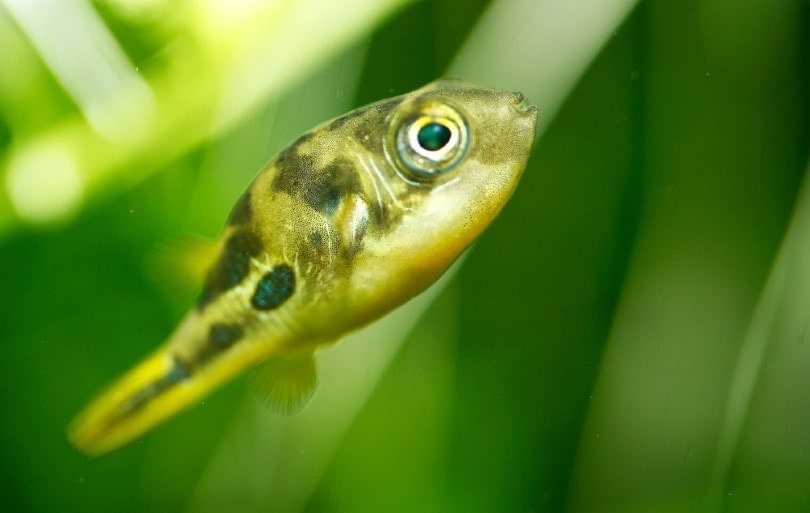
The 3 Benefits of Having Tank Mates for Pea Puffers in Your Aquarium
1. Beauty and Interest
Tankmates added to Pea Puffer tanks can create a lot of interest and activity in your tank. Pea Puffers are cute but not particularly flashy fish. Adding in eye-catching tank mates, like Mollies, Tetras, and Rasboras, can draw attention to your tank and make it appear livelier.
2. Clean Up Crew
Since Pea Puffers spend most of their time in the middle of the water column, they may not pick up food that is in the upper or lower water column. They also will not eat algae. The addition of tank mates that help keep the tank clean, like Otocinclus and Corydora catfishes, will help maintain the quality of the water in your Pea Puffer tank.
3. Population Control
Pea Puffers are great for population control of all kinds of fish and invertebrates. This means that adding tank mates to your Pea Puffer tank can make for a nice community tank without populations that get out of control. Some people get Pea Puffers to help control the population of snails in their tank, especially rapidly reproducing “pest” snails. They can also help control the population of livebearers, like Mollies and Guppies.
Conclusion
Pea Puffers are fun fish that you don’t see every day, so keeping a Pea Puffer tank can be an interesting experience. However, these fish are not for beginning fish keepers due to their tank setup needs and behaviors. A heavily planted tank is ideal because it helps break up their field of vision and helps them feel more secure, less aggressive, and territorial. Their behaviors make choosing the right tank mates for them extremely important.
If you pair your Pea Puffers with other aggressive fish, you may end up with a blood bath in your tank. If you pair them with peaceful fish that spend their time in the middle of the water column, you may see bullying occurring. Choose your tank mates carefully and make sure that you get the appropriate number of the tank mate you choose. Shoaling fish should only be kept in shoals and will often become stressed if kept in small groups or as individuals. Other fish may require pairs or harems to prevent aggression.
- See Also: Best Tank Mates for Figure 8 Puffer Fish
Featured Image Credit: Toxotes Hun-Gabor Horvath, Shutterstock




